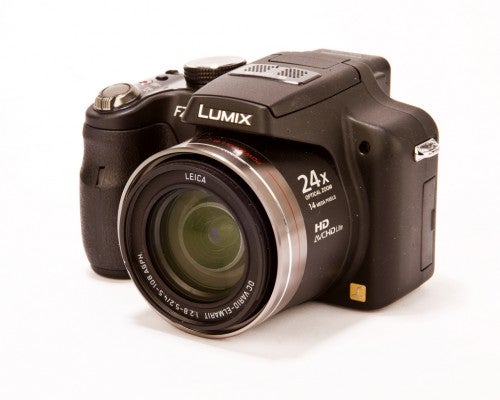With a new processor, higher pixel count and extended zoom range, the FZ45 is a welcome addition to Panasonic's acclaimed superzoom series
Panasonic Lumix FZ45 Review
With Compact System Cameras attracting so much attention these days, it’s easy to forget another alternative to the DSLR: the superzoom bridge camera. Traditionally these have married long zoom lenses with DSLR-like manual control, and more recently added Raw shooting and HD video capabilities. Panasonic’s latest FZ45 is the latest in a line of well-received superzooms, and manages to offer all these features and more, but with a price tag just shy of £300 it has to put in quite a performance to outgun its cheaper rivals.
Panasonic Lumix FZ45 Review – Features
The camera’s 24x optic may not have the broadest range in its class, but starting at 25mm and finishing up at 600mm means there should only be a handful of shooting situations that lie outside its capabilities. The two aspherical and three ED elements within its construction should also help maintain image quality throughout the focal range, while the previously-seen Power OIS system is said to better correct for hand-shake image blur than Panasonic’s previous MEGA OIS technology.
The FZ45’s 14.1MP sensor captures images in both Raw and JPEG options, and outputs Raw images in Panasonic’s proprietary .RW2 format. HD movie recording, using the AVCHD Lite format, is possible to a maximum resolution of 1280x720p, with a Motion JPEG option offered alongside, while movies recorded using the Creative Movie mode also allow the photographer to adjust the same exposure parameters as provided by the standard PASM quartet, in addition to providing control over maximum sensitivity, colour options and a range of other options.
There’s little out of the ordinary with the camera’s LCD screen and EVF, the former measuring 3 inches and with a 230,000dot resolution. The camera also accepts the SD, SDHC and SDXC trio of memory card formats, and is supplied with a rechargeable lithium ion battery which is claimed to last for up to 580 shots once fully charged.
Panasonic Lumix FZ45 Review – Design
The design of the FZ45 sports a few minor alterations from its predecessor, partly to better fit the larger LCD screen. The movie recording button has also been moved to the top-plate for quick access by the forefinger, and the playback/shooting switch has been replaced by a more convenient Play button. Everything is still arranged logically and clearly labelled, while the rubber-lined grip is just large enough to get a secure hold.
There’s little to complain about with regards to build quality too, although gently shaking the camera does cause some rattling – it appears, from the optic – which may concern some. Furthermore, those with larger hands may be put off by the size of the command dial and the various buttons, with the Play button also awkwardly recessed into the body.
There’s just a slight whirring from the lens as it zooms in and out of a scene, but the focusing system is next to silent and reasonably quick. The 23-point AF pattern finds key subjects with ease, while the AF tracking option does a stellar job to keep track of moving subjects, although subjects still need to be focused by half depressing the shutter release button. The face detection system finds primary and secondary subjects quickly too, and is willing to adhere to the subject as they, or the camera, move.
Panasonic Lumix FZ45 Review – Image Quality
Previous FZ models have impressed with their image quality, and the FZ45 doesn’t disappoint. Exposures are balanced to give pleasing results, with just a slight bias towards overexposure in typical shooting conditions, while colour is largely accurate. JPEGs receive the standard injection of vibrancy and contrast adjustment we expect over Raw files, and their lower levels of chromatic aberration next to Raw images suggest that some clever in-camera processing is going on. Noise and noise reduction are noticeable from around ISO 200 onwards, and at the highest few sensitivities both become aggressive, although gentle Raw processing comfortably gets round some of these issues to give better results. JPEGs are also only a little sharper than Raw files, and may require further sharpening to taste.
Otherwise, the level of detail in images is very good, and sharpness extends well to corners and edges, typically with just minor softening noticeable in corners. While results are the telephoto end of the camera’s optic are just marginally softer than those shot at wider focal lengths, the image stabilisation system seems to provide a benefit of around 2-3EV steps, which is perfectly reasonable. There is a touch of barrel distortion at the wide end of the lens, but this is slight and only really an issue when shooting close up to certain subjects.
Verdict
The FZ45 handles well and offers a compelling blend of features, while image quality is consistent and only let down by the kinds of issues we would expect from a camera of this sort. It's also welcome to see a wealth of control on offer when shooting videos, too – but, if it's video you're after, you may also want to look at its FZ100 launch partner, which boasts a tiltable LCD screen with a 460k dot resolution for only a shade more.





